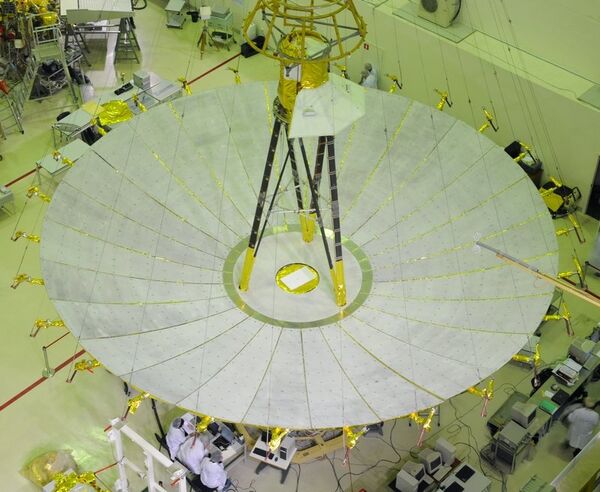Russia's Spectr-R spacecraft with a powerful radio telescope passed the lowest point of its highly elliptical orbit for the first time since its launch on July 18, the Russian Federal Space Agency, Roscomos, said on Thursday.
The goal of the RadioAstron space observatory project is to study various types of astrophysical objects with unprecedentedly high angular resolution in the centimeter and decimeter wavelength bands.
The observatory will operate a 10-meter Space Radio Telescope working together with an international network of ground-based radio telescopes in the interferometer mode. It will obtain images of deep space objects with a resolution exceeding that of NASA's Hubble telescope a thousand times over.
The current testing stage will provide all necessary data to synchronize the on-board equipment with a ground-based monitoring and data-processing center in the Moscow region.
The development of the RadioAstron observatory started 12 years ago. It is the first large astrophysical instrument built in Russia since the end of the Soviet era.
RadioAstron will help scientists to study processes inside active galactic nuclei, the elusive "dark matter," and the structure of the remote regions of our galaxy. It will also help create a precise model of the Earth's gravitational field.


